► Sandero Access remains, from £7995
► Well-enough equipped from £8995
► Remarkable quality, excellent Bi-Fuel option
Budget cars generally come with a list of caveats longer that their spec sheets, that end up with you electing to buy a two-year-old supermini instead.
But, with more success than it’s achieved in the past, the all-new 2021 Dacia Sandero flips that notion upside-down. It remains available from £7995 with white paint and black bumpers, of course; but it’s the £8995 Essential range that sets the bar.
Yes. The middle-of-Lidl Dacia has gone a bit, well, Waitrose.
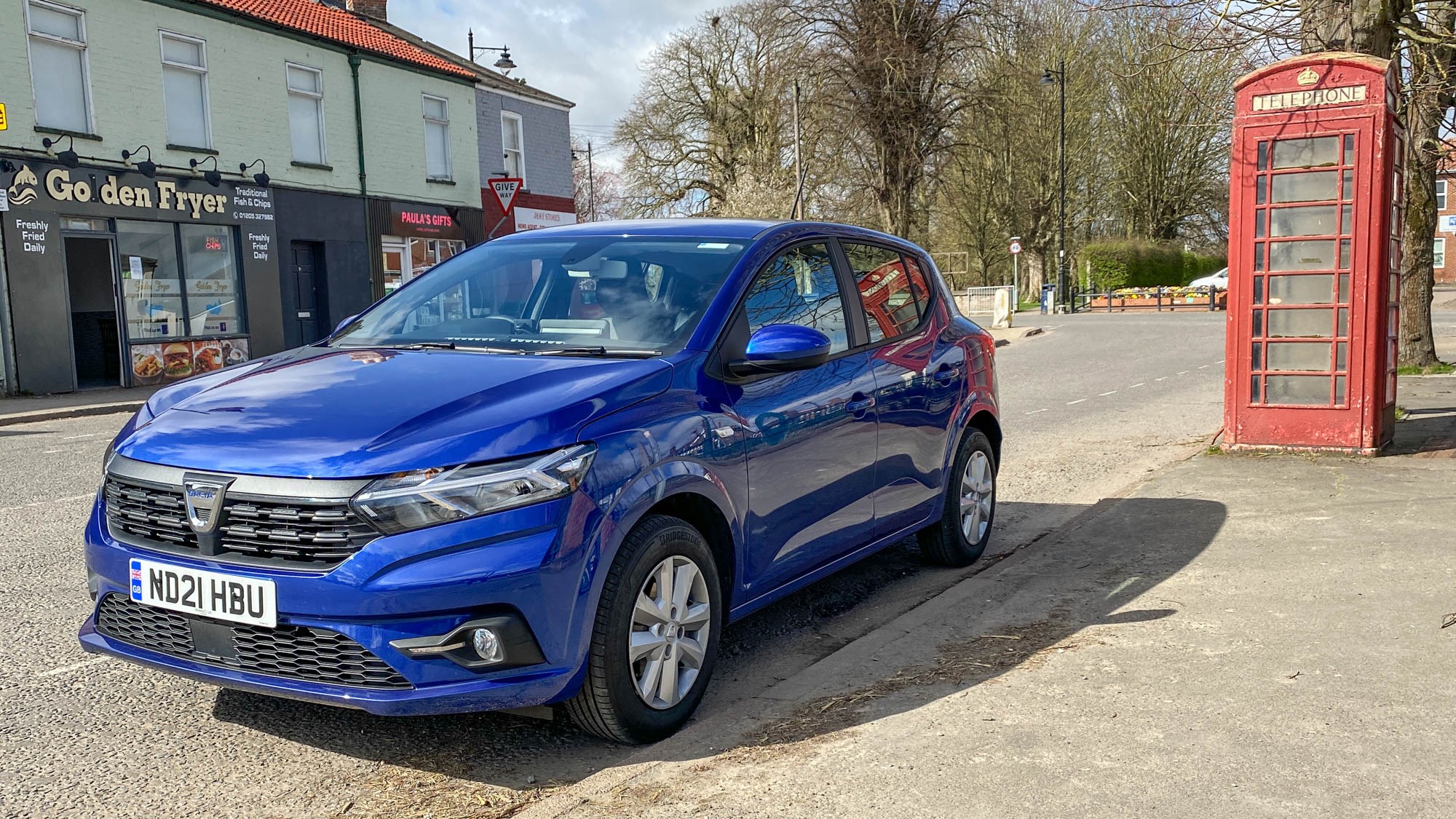
What you get in a 2021 Sandero is the same no-nonsense approach to motoring Dacia has always represented, but with few (if any) real compromises in build quality, style or basic comforts. Rather than being based on a ‘cast-off’ platform, it’s a thoroughly up-to-date Renault CMF-B model developed as thoroughly as any Clio or Micra – with some shared safety equipment and a characterful 1.0-litre three-cylinder engine.
Best cars for new drivers
It still looks like a Sandero, but the designers have captured the essence of no-nonsense ruggedness without that ‘uncanny valley’ lack of detail refinement that often marked out cars from Eastern Europe.
Chunky, squared-off flared arches mask the height of the small car (needed to give large passenger and cargo space), the grille on higher-specification models is made of plastic and chrome with a quality feel, and LED lighting with striking signature DRLs gives every new Sandero a very modern face.
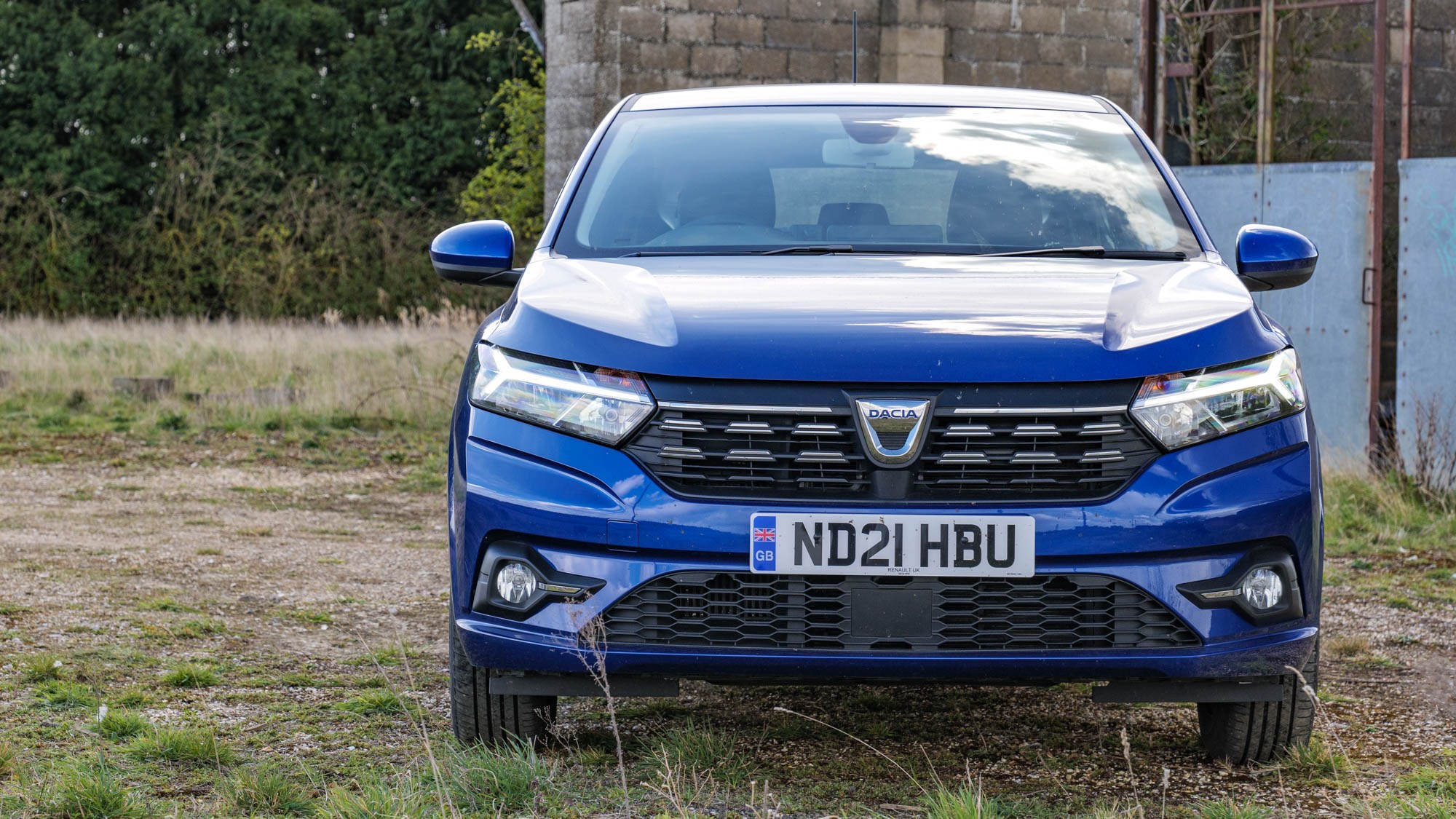
Inside, it’s the same story. Where previous Dacia interior designs left you in no doubt as to the ‘cheapness’ of your car, the 2021 Sandero’s simple, angular dashboard (accented with a sliver of fabric on Comfort models) is a modern and appealing design, rendered in solid but squeak-free black plastic.
Compared to more expensive rivals, the door trims are simple and solid plastic, the instruments are old-school analogue dials with a monochrome display between for trip computer and settings, and the seats lack adjustments beyond the basics.
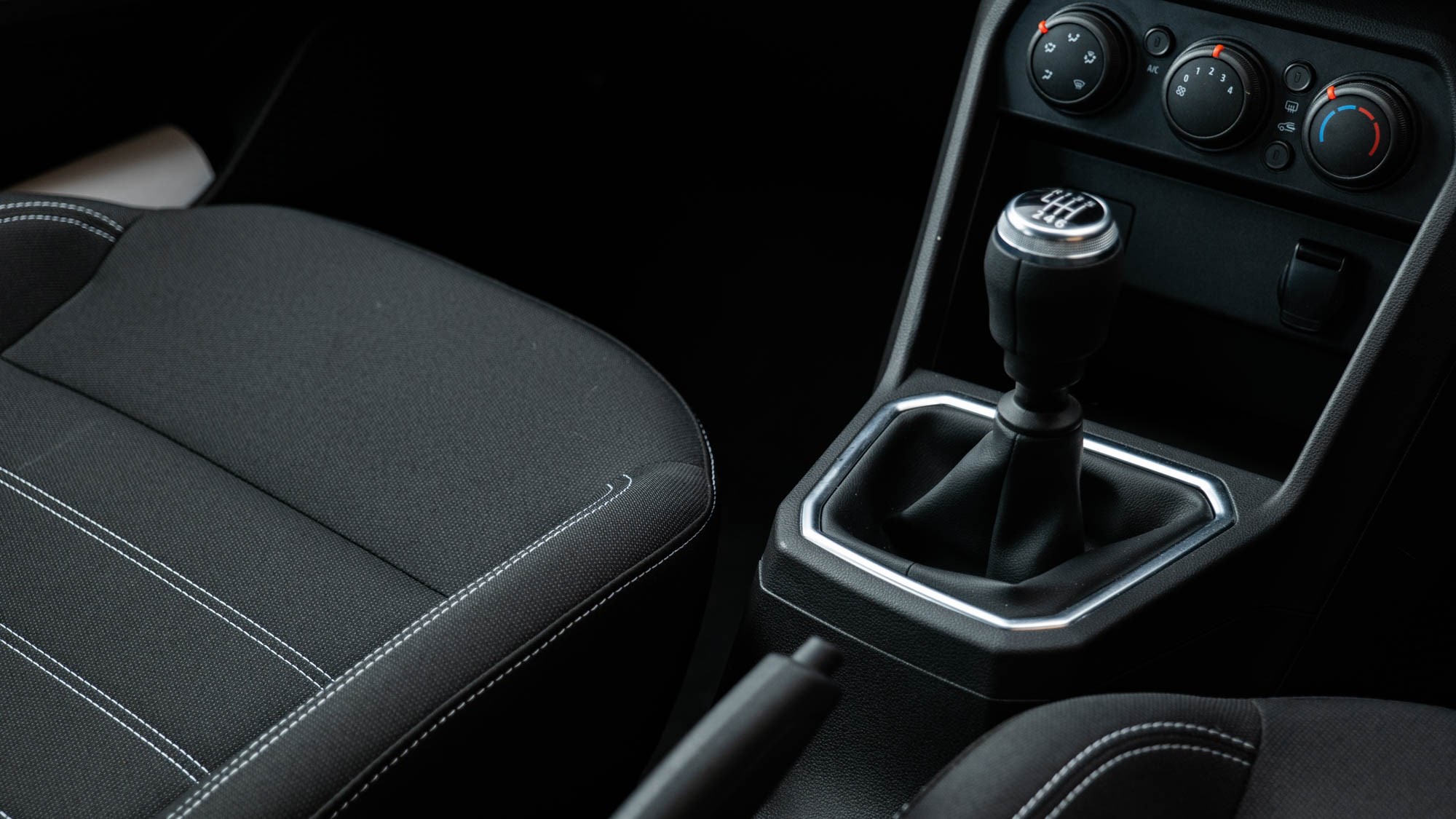
You’ll have to suffer such indignities as ‘pulling a lever up from the floor to apply the handbrake’ and ‘turning a dial to make the car hotter or colder’, but if those sound like hardship, perhaps it’s time to get a new sense of perspective; how much time did you spend enjoying climate control and electronic handbrakes in 2020?
Driven: Dacia’s dual-fuel LPG whizzkid
We got behind the leatheresque-trimmed wheel of the Sandero Comfort 100 TCe Bi-Fuel, and in that specification (£11,995) it is extremely difficult to make a rational argument for spending more on a car.
In a rich metallic blue, the styling’s strengths are highlighted very effectively – presenting an antidote to blobby, overly-fussy shapes, the Dacia is rather refreshing without being bland; as with the most recent Duster, you can see the Romanian brand’s identity becoming stronger with each new generation.
The Sandero’s off-road-esque sister model, the Stepway, is even more effective in this regard.
In Comfort specification the Sandero rides on clever ‘Flex’ wheels that feature full trims that resemble alloys, albeit still 15-inch with generous sidewalls, and the addition of front foglights plus chrome accents on the grille show off your decadence compared to lesser Dacias.
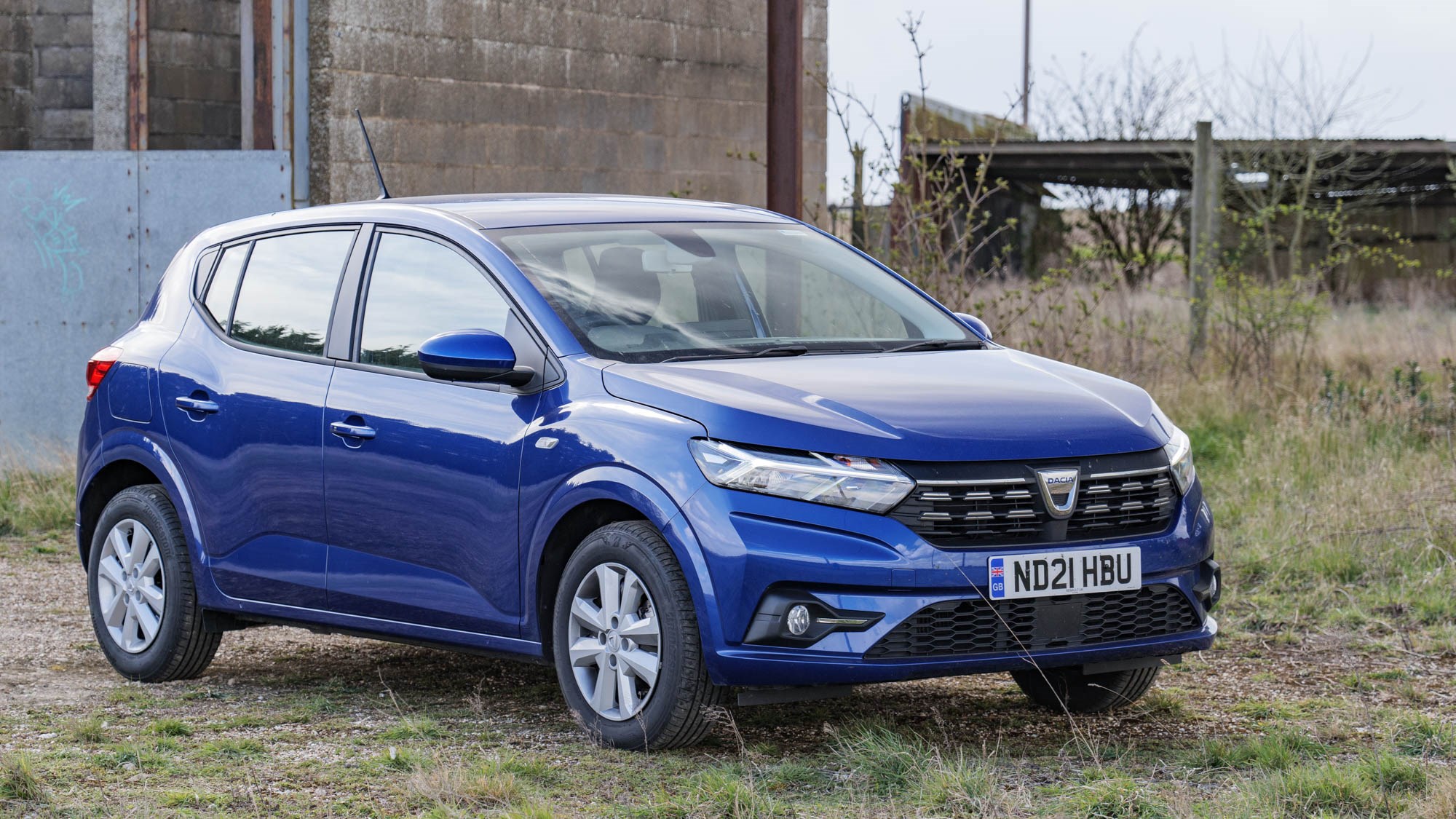
The seats are moderately firm with subtle bolsters, and there’s excellent pedal placement, a wide footwell and adjustable steering column, plus variable height for the driver’s seat only.
An eight-inch infotainment system with a clever smartphone holder and USB port in close proximity dominates the centre of the dashboard – it doesn’t have the glossy screen finish of premium models, but it works well enough, aided by the typically-Renault audio ‘paddle’ behind the steering wheel.
Navigation suffers by feeling dated (it appears to still use five-digit postcodes), but there’s Apple CarPlay/Android Auto support – lesser models replace the infotainment screen with a neat cradle to hold your phone instead (the Access, however, does not have a radio or speakers at all).
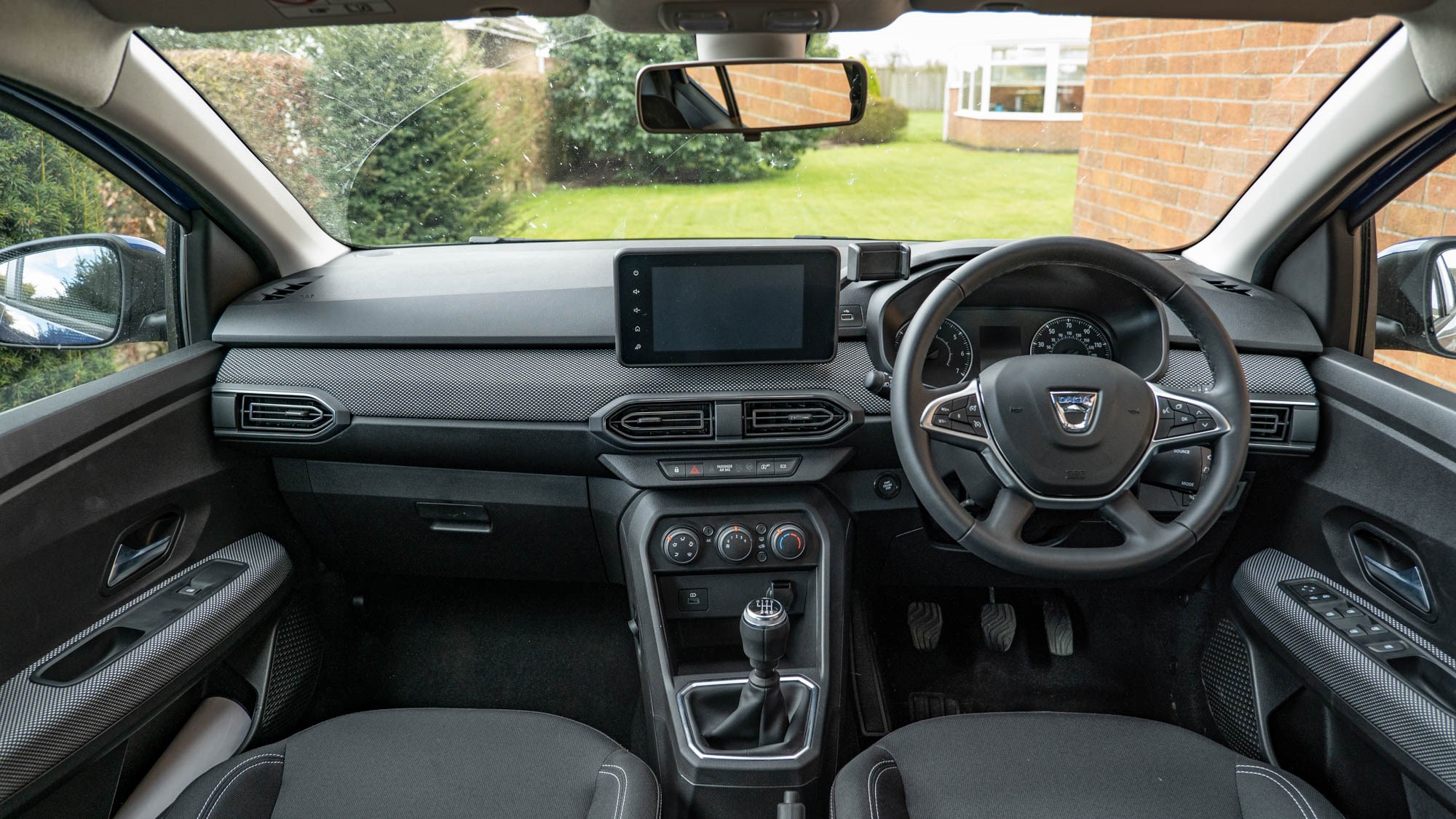
Visbility is excellent, helped by large mirrors and deep side windows, and though ambient noise is present even with the doors shut, the interior doesn’t sound tinny or hollow.
That smartphone holder isn’t as smart as it could be, though, as it’s wedged between the instruments and infotainment panel with insufficient room to expand for an iPhone 11’s width. It would probably be okay with a Pro, but the typical plus-sized smartphone will be wedged in and angled away from the driver. If anything, the DAB radio and smartphone cradle of the Essential may be better for owners of bigger devices.
100 TCe goes both ways – and up to 800 miles
All Sanderos get a 1.0-litre three-cylinder petrol engine, without a turbocharger on the SCe 65 and with for the 90 TCe and 100 TCe Bi-Fuel. The latter engine has a factory-installed LPG system and it is seamless in use, with a properly integrated switch by the driver’s right knee and dual trip computers on the dashboard, swapping tank capacity and economy figures accordingly.
Sitting under the boot floor in the spare wheel well, the only downside to the LPG installation is the tank precluding puncture preparation (there’s a kit with the usual emergency supplies, but it has no specific storage space). On the upside, this means you have an uncompromised petrol tank, which in normal driving means a combined range approaching 800 miles (it may even exceed that for most drivers – we didn’t hold back).
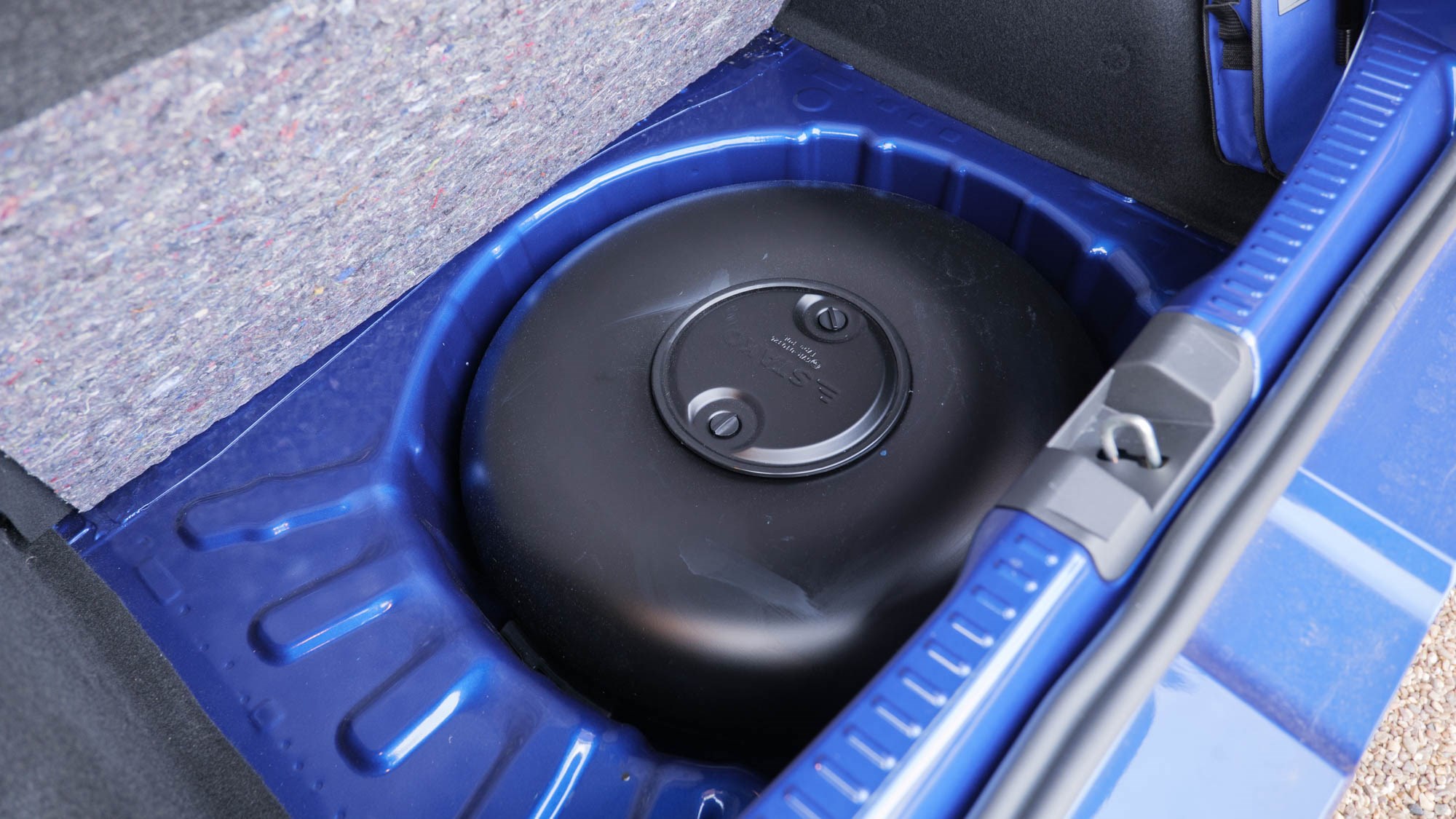
Regardless of fuel the three-pot makes the usual encouraging noises as you race up the six-speed gearbox; second gear is particularly satisfying while navigating urban dual carraigeways and roundabouts, complemented by the direct and communicative steering. If anything the Sandero feels more eager when running on LPG – this is, after all, a thoroughly developed factory installation, not some back-street, unmapped conversion.
As befits a car that espouses a back-to-basics ethos, the Sandero’s a delight to control if you enjoy driving. Some bodyroll is inevitable – the trade-off for a pothole-absorbing suspension that makes more noise than movement for road imperfections – but it is still much firmer than budget cars of old. The gearshift falls somewhere between Japanese precision and European vagueness, clicking between ratios easily, facilitated with a progressive clutch that isn’t snappy or prone to biting too low unlike some French designs.
Driven with all that in mind – and with an awareness that other road users see the Dacia badge and expect you to be an obstruction to be bullied out of the way – the petrol side returned over 43mpg, the LPG 31mpg. This does undermine the cost advantage that motivates so many LPG users, but the fuel has other benefits in terms of emissions and engine longevity – for a £400 premium the upgrade is a no-brainer really.
Living with LPG
If you’re looking at the pictures for the tell-tale plastic cap and bodged-in pipe, save some time and just go straight for the fuel door. Occupying a similar sort of position to the AdBlue filler on many cars, the LPG inlet is beside the petrol filler, flush and of European design with a threaded valve.
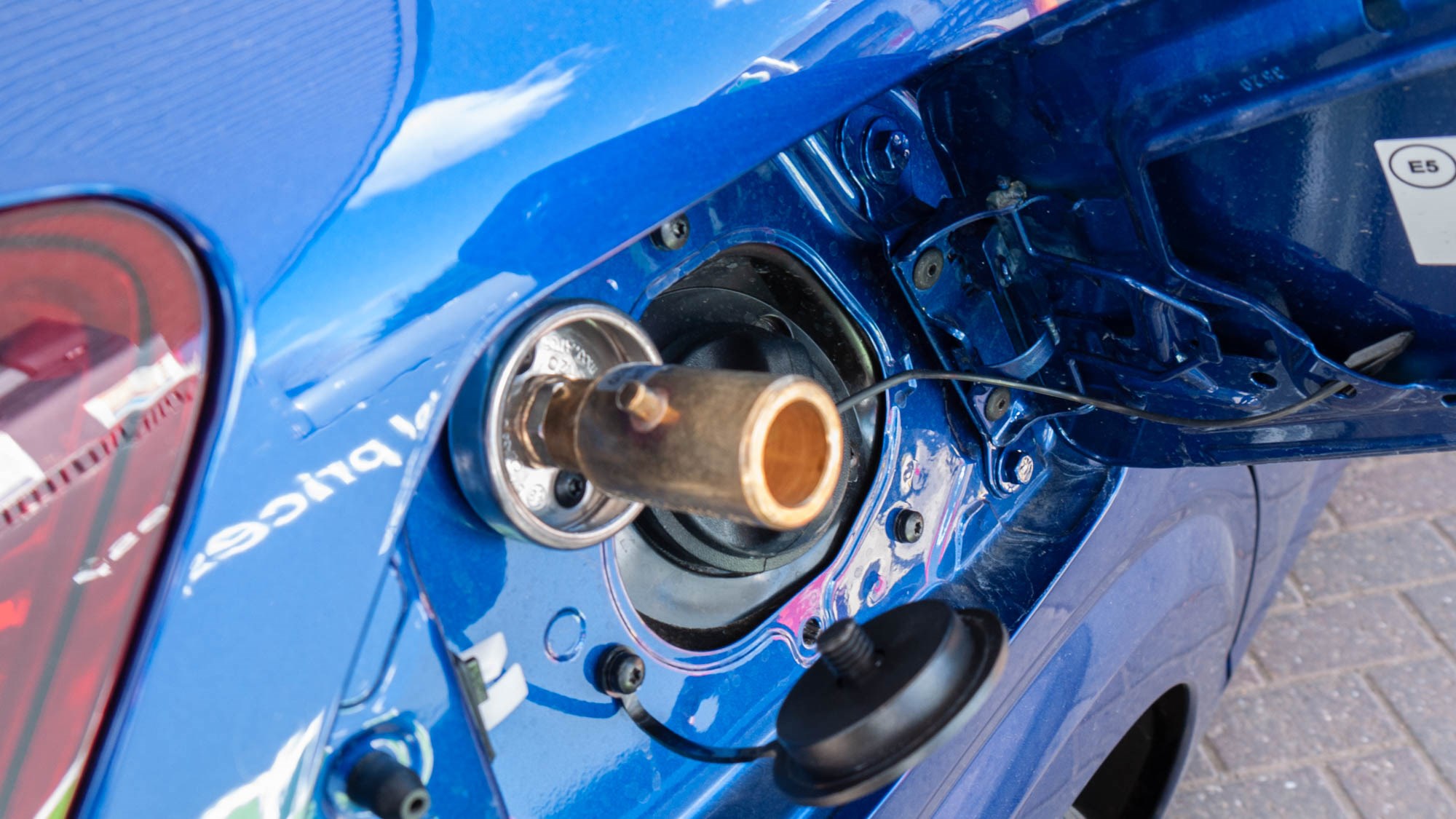
This means for British pumps you need an adaptor, and at first that seems like a lot of faff. It is. You screw it onto the plate, and then slot the bayonet for the LPG hose over it, rotating a large handle 90º. There’s no positive locking, meaning the handle can be rotated either way, but once rotated you latch it by pushing the lever back.
Rotating clockwise goes with the thread of the adaptor but invariably means that large lever can foul the fuel-filler door. LPG is delivered under pressure, too, so you end up fighting the pressure in the line when undoing the bayonet, which unscrews the adaptor instead of releasing.
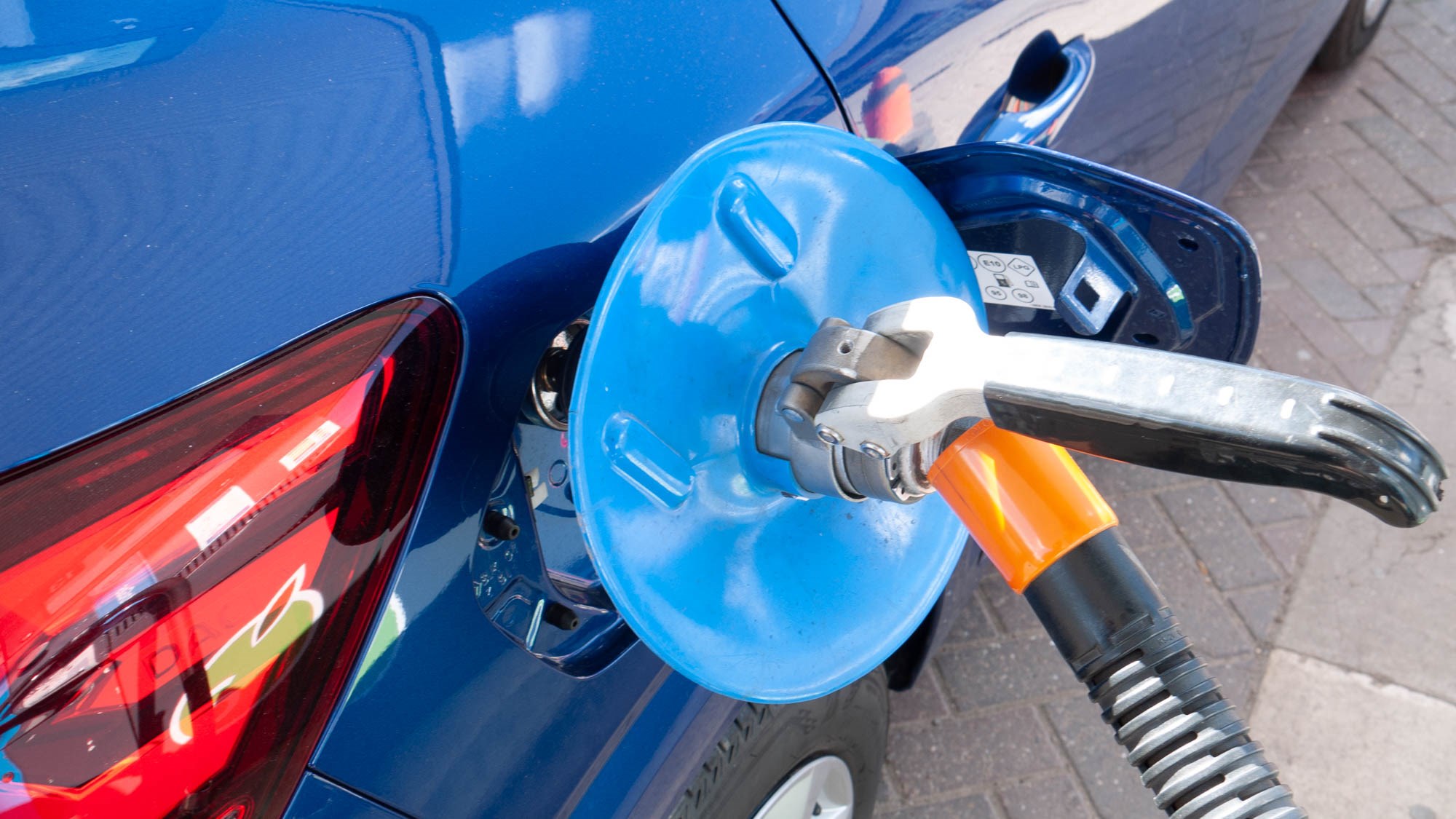
There will be a knack to it, but it’s the one time the Sandero’s LPG system feels anything other than seamless. Plus you end up carrying that little adaptor about.
Sandero: brand values, refinement and image
Compared with modern, more expensive cars the Dacia is obviously less well equipped. Even on the Comfort you have manual air conditioning (the Stepway, for an appropriate premium, gives you digital climate control), though you do get keyless entry (the start button is the one part of the car that looks like an afterthought), a reversing camera and parking sensors. As the car is square with big mirrors, you probably don’t need those as often.
However, you also discover a refined, near-silent engine at idle, solid doors, excellent fit and finish, and even some appealing design on the interior. Yes, it’s less fancy than a Renault, but it’s no worse than the interior on most £30,000 pick-ups, and crucially it has fewer squeaks, rattles and chirps than some £40,000 cars from a premium German marque.
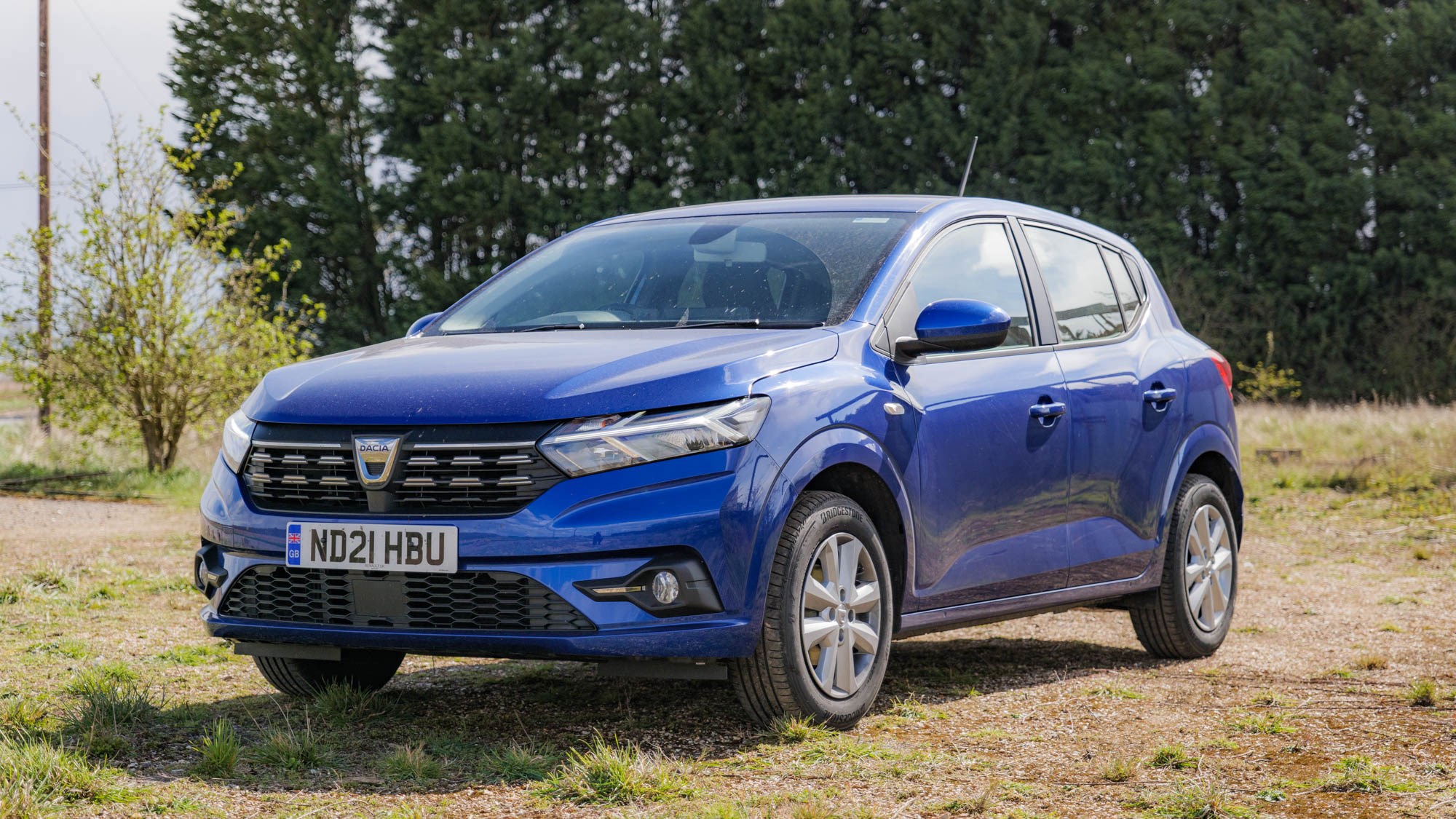
At speed there’s a fair amount of wind and road noise, but even at motorway speeds the 100 TCe engine is refined, has enough power to overtake or keep a fully-loaded car at the speed limit with a minimal-effort gearchange, and overall noise levels are low enough for conversation.
It’s also worth noting that around 50mph, you can open the front window and it’s just pleasant, not overly blustery; the Sandero feels less like an isolation chamber than many modern cars.
All this is in addition to the usefully-shaped, large boot – though a false-floor for a flat load area with seats folded is an accessory. That’s the only area the Sandero shows obvious cheapness, too – the loading lip is untrimmed painted metal.
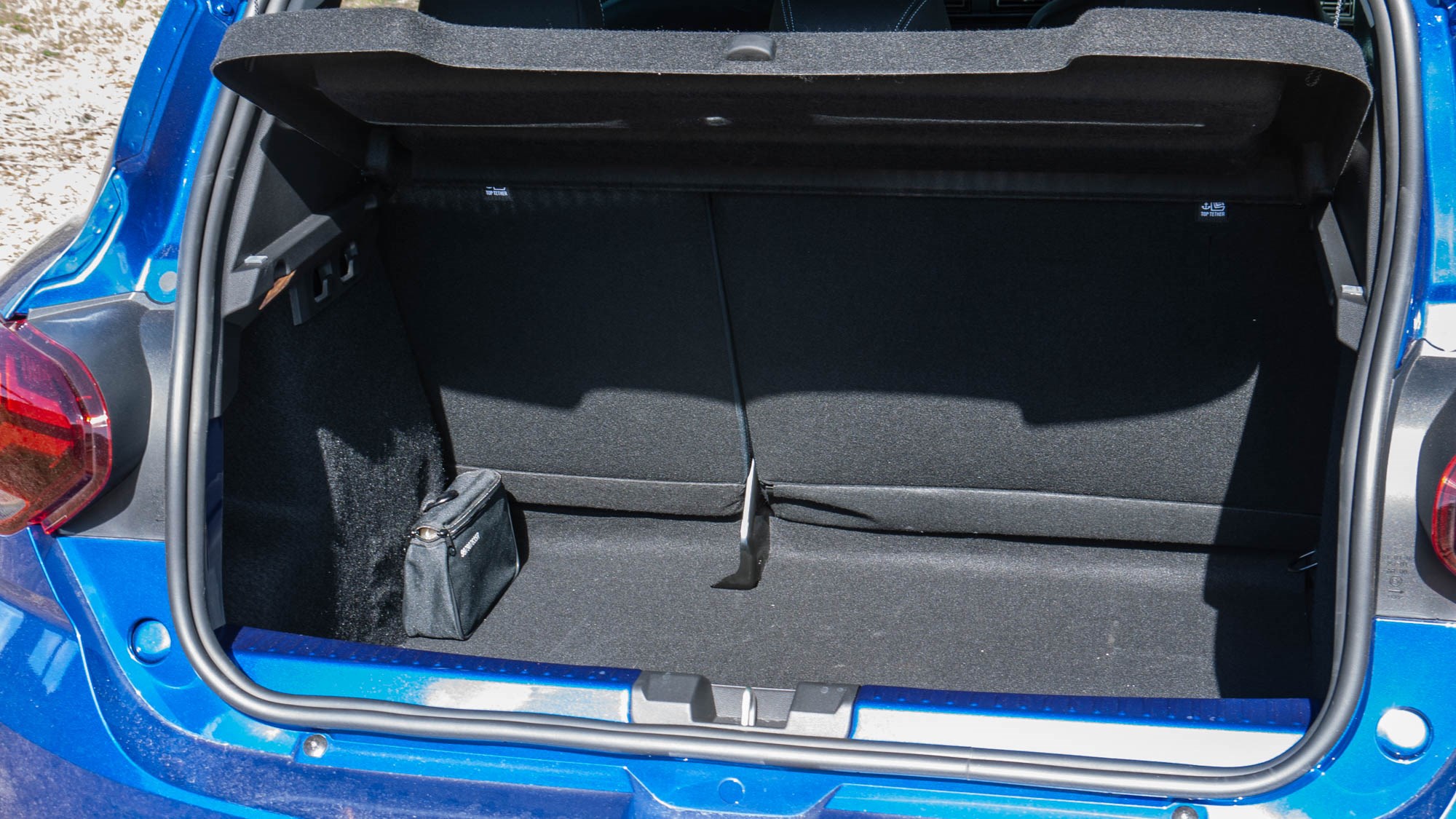
When a basic-spec Fiesta is around £16,000, the amount of space, performance and solidity you get for less than £11,000 in the Sandero is extremely difficult to dismiss.
Dacia Sandero (2021) Comfort 100 TCe Bi-Fuel verdict
No bones about it – the new Sandero is an unqualified success as a small, lively and economical family car, and in a rational world you wouldn’t be able to move for them instead of aspirational, oversized SUVs and premium hatchbacks.
How much is it worth spending to make sure your trip to Tesco is advertising how much you earn? Unlike previous budget-brand efforts, including the 2013 Sandero, all vestiges of cast-off tech or cheapness, or indifferent build quality, have been chased away if our test car is anything to go by. The only technical argument the Sandero struggles to answer is that of EuroNCAP scores – but that ever-moving goalpost has little to do with how strong or safe a car is in a crash, and the notes reveal a small, light car that offers good protection.
Which ultimately leaves nearly all the rational arguments against choosing a Sandero over a more expensive, but similarly-equipped supermini somewhat exhausted.
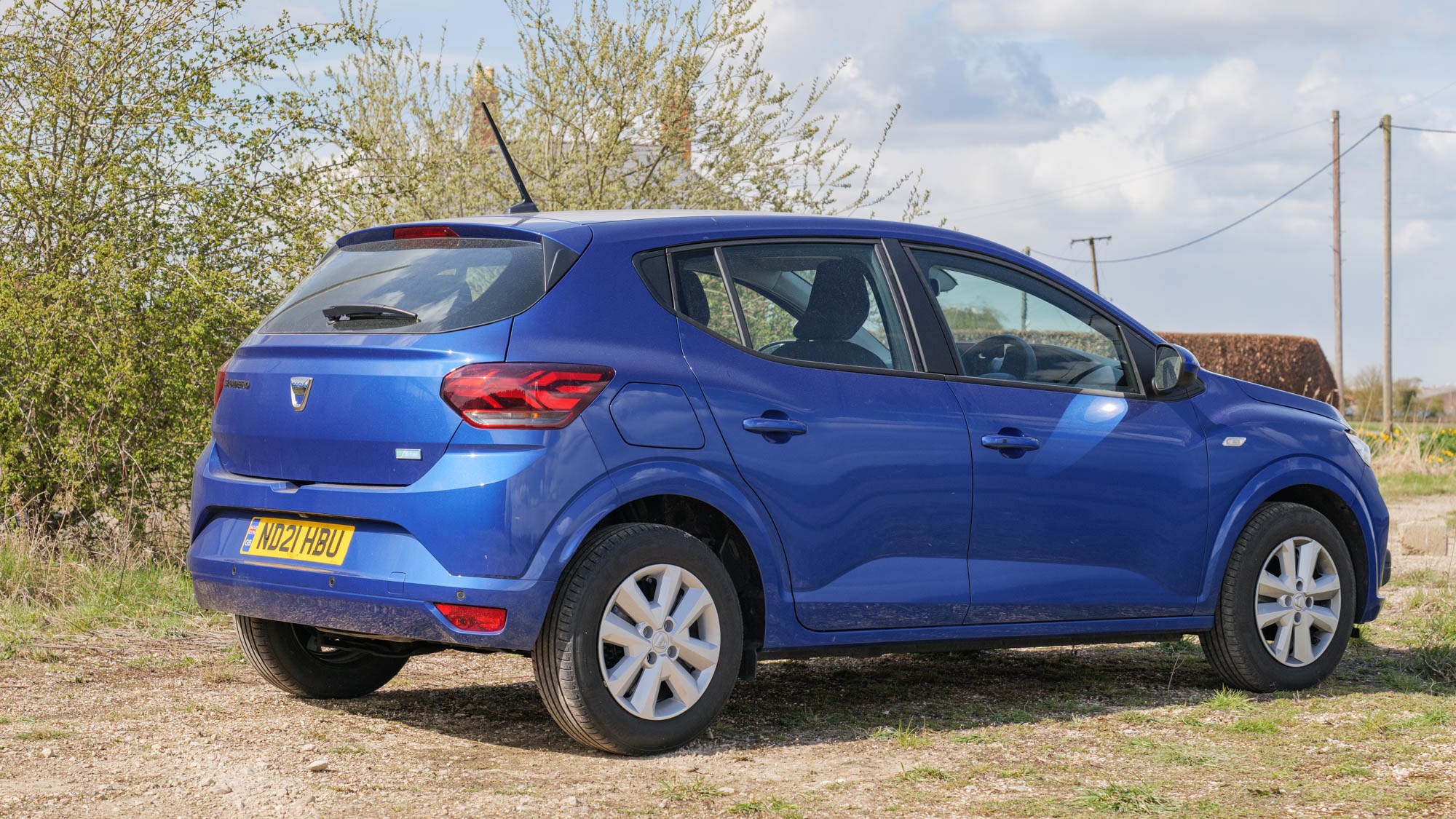
It’s true that we’ve looked at the sweet spot in the range, the most powerful engine with the highest trim level and a unique selling point in the integration of LPG; an Access will still feel incredibly spartan and slow, it’s absolutely worth the £2400 more for the Essential trim and Bi-Fuel engine, but spending another £1600 for alloy-look wheels, softer trim and navigation may be easier to live without.
The real question is, are you self-assured enough to go for a Sandero over a secondhand car with a more prestigious badge in the first place?